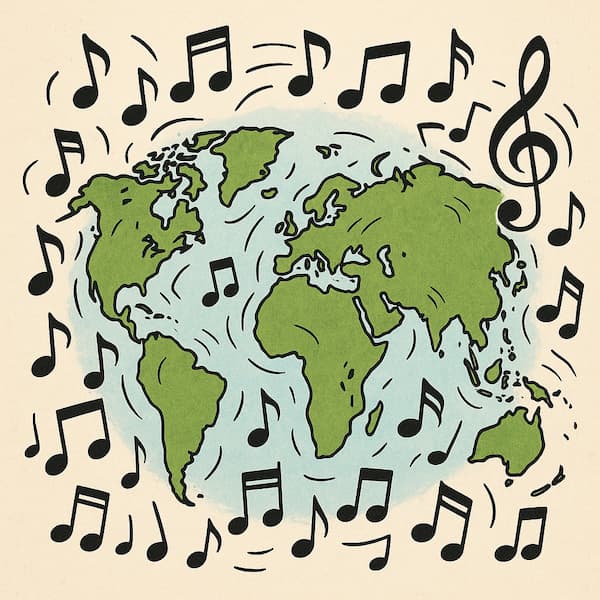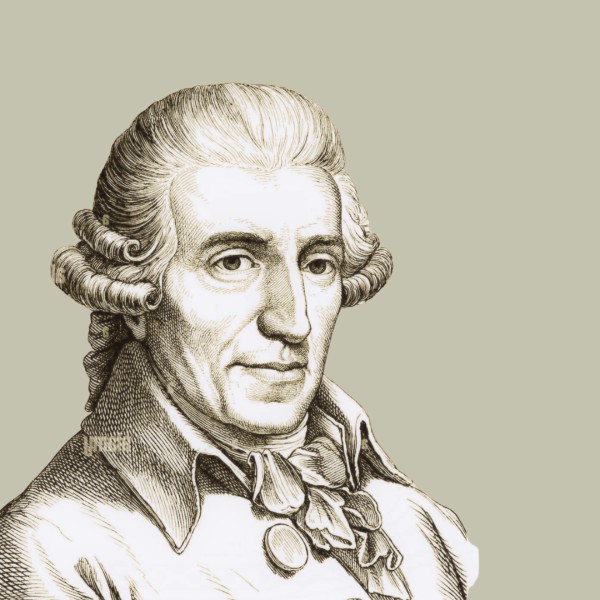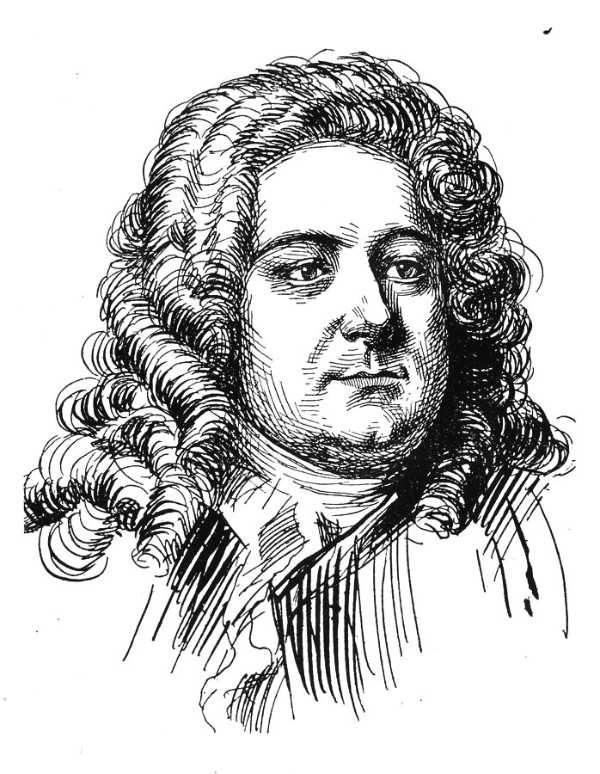Throughout music history, composers have drawn inspiration not only from cities but also from regions, memories, and imagined landscapes—evoking cultural identities and emotional terrains through sound. While iconic works like Respighi’s Roman Trilogy or Bernstein’s West Side Story are widely celebrated for their geographic associations, many lesser-known compositions also deserve recognition for their powerful portrayals of place. These works demonstrate how geography—whether real or remembered—can influence rhythm, form, tone, or even satire. This article explores twelve such pieces, ranging from urban portraits and nostalgic dances to political memorials and surreal vocal experiments, each inviting listeners into a unique sonic landscape.

Teresa Carreño (1853-1917): Une revue à Prague (1868)
This vivid and virtuosic piano piece by Venezuelan composer Teresa Carreño showcases her flair for colour, drama, and pianistic brilliance. This French title, meaning “A Review of Prague,” draws inspiration from a theatrical or ceremonial procession in Prague. The piece features sweeping arpeggios, lyrical interludes, and a dynamic rhythm with vitality. Blending Romantic expressiveness with cosmopolitan elegance reflects Carreño’s life across Europe and the Americas.
Celso Garrido-Lecca (b.1926): Suite Peruana (1986)
Suite Peruana– VI. Tondero
The soon-to-be 100-year-old Peruvian composer Celso Garrido-Lecca brings a lifetime of cultural insight and artistic finesse to this six-movement suite for string orchestra. Drawing from Peru’s rich dance and vocal traditions, each movement evokes a different regional character—from the lilting Negrito de Malambo to the vibrant Tondero. With clear textures and rhythmic vitality, Suite Peruana transforms folkloric material into a refined symphonic tapestry—a heartfelt tribute to Garrido-Lecca’s homeland.
Florence Price: Mississippi River Suite (1934)
Florence Price: The Mississippi River – Andante con moto – Allegretto (ORF Vienna Radio Symphony Orchestra; John Jeter, cond.)
In this one-movement orchestral suite, Florence Price divides it into four sections that depict the journey of the Mississippi River through a collage of spirituals, folk melodies, and original themes. As the river flows, so does the music, evoking cultural landscapes along its course. With rich orchestration and cinematic pacing, the work reflects Price’s unique voice as the first African American woman to gain national recognition as a symphonic composer in the U.S., offering both historical resonance and expressive depth.
Percy Grainger (1882-1961): Colonial Song (1911)
Originally written for piano and later orchestrated, Grainger’s Colonial Song is a nostalgic homage to the Australian countryside. Eschewing direct folk quotations, he instead channels the emotional warmth of place through sweeping melodies and lush harmonies. Intended to evoke for Australians what Stephen Foster’s songs do for Americans, this introspective work, once misunderstood by critics, now stands as one of Grainger’s most personal and heartfelt tributes to home.
Hamilton Harty (1879-1941): In Ireland (1918)
An Irish composer, conductor, pianist, and organist, Sir Hamilton Harty’s In Ireland is a fantasy for piano and flute. The music evokes both the pastoral serenity and urban charm of his homeland. With lilting melodies and rich harmonies, the piece invites listeners to imagine a range of Irish scenes, subtly alluding to the bustle of Dublin within its otherwise countryside atmosphere. It is a nostalgic musical postcard, blending folk-inspired themes with late-Romantic sensibilities.
Bernardo Cardona (b.1965): Suite Medellín (2008)
Suite Medellín: I. Enciso
In this contemporary orchestral suite, Colombian composer Bernardo Cardona crafts a vibrant sonic portrait of Medellín. The first movement, Enciso, celebrates communal dances held in open homes, drawing on the city’s rich mix of cumbias, gaitas, porros, and orchestral works by Colombian greats like Lucho Bermúdez and Pacho Galán. With eclectic instrumentation and local flavour, Suite Medellín captures the rhythm and resilience of a transforming city.
Luigi Boccherini (1743-1805): La Musica Notturna delle Strade di Madrid (ca. 1780)
Musica notturna delle strade di Madrid: V. Passacalle. Allegro vivo
A charming rarity in programmatic chamber music, Boccherini’s quintet Night Music of the Streets of Madrid vividly portrays 18th-century street scenes—from church bells and military drums to beggars’ laments. Though Italian by birth, Boccherini spent much of his life in Spain, and this piece brims with local colour. With delightful specificity, it conjures Madrid’s nocturnal atmosphere and urban energy through inventive textures and subtle theatricality.
Steve Reich (b.1936): City Life (1995)
City Life: V. Heavy smoke
A bold sonic portrait of 1990s New York, Reich’s City Life fuses chamber ensemble with urban sound samples—car horns, alarms, even speech fragments. This minimalist work captures the city’s pulse with relentless rhythmic drive and layered textures. Rather than romanticising the metropolis, Reich offers a raw, immersive experience of modern life, blurring the boundaries between classical composition, sound art, and real-world documentary.
Darius Milhaud (1892-1974): Saudades do Brasil (1920–21)
Saudades do Brasil: V. Ipanema
Composed after Milhaud’s stay in Brazil, this suite of piano dances (later orchestrated) comprises 12 short pieces, each named after Rio de Janeiro neighborhoods like Copacabana and Ipanema. The Portuguese word saudade—a bittersweet longing—infuses the music with nostalgic warmth. Through syncopated rhythms, jazzy harmonies, and polytonal color, Milhaud distills the vibrant soul of Brazil into short but evocative musical sketches.
Benjamin Britten (1913-1976): Death in Venice (1973)
Britten’s final opera, based on Thomas Mann’s novella, transforms Venice into a haunting symbol of beauty, decay, and obsession. The story focuses on Aschenbach, a writer who visits Venice seeking to overcome his writer’s block. There, he unexpectedly falls deeply in love with a young Polish man named Tadzio. His intense passion for Tadzio keeps him in Venice amidst a cholera outbreak, which ultimately leads to his death. With sparse orchestration and shimmering textures reminiscent of gamelan music, the opera blurs the line between psychological and physical space. Venice becomes not just a setting but a character—its canals and silence echoing the protagonist’s inner unraveling.
Bright Sheng (b.1955): Nanjing! Nanjing! (2011)
Bright Sheng: Nanking! Nanking! A Threnody for Orchestra and Pipa (Qiang Zhang, pipa; Hong Kong Philharmonic Orchestra; Samuel Wong, cond.)
This powerful work for pipa and string orchestra commemorates the 1937 Nanjing Massacre. Chinese-American composer and pianist Bright Sheng blends Eastern modalities with Western symphonic tradition, crafting an elegiac, emotionally charged lament. Rather than painting a scenic portrait, the piece serves as a historical reckoning—an exploration of trauma, resilience, and cultural memory centered on a specific geographic and human tragedy.
Ernst Toch: Geographical Fugue (1930)
One of the most unusual pieces in this list, Austrian composer Toch’s Geographical Fugue is a spoken-word composition using rhythmic speech rather than pitch. Words like “Trinidad,” “Mississippi,” and “Popocatepetl” become musical material in a contrapuntal structure. Written during the composer’s experiments in “speech-music,” this surreal and witty piece turns global geography into an abstract yet playful soundscape.
From Prague to Nanjing, these lesser-known works showcase the many ways composers have interpreted the concept of place, encompassing physical geography, memory, identity, and storytelling. Whether inspired by folk traditions, city soundscapes, or personal nostalgia, these compositions broaden our view of how classical music can capture the essence of a location. Beyond the well-known monuments of the classical canon, there exists a rich and varied terrain of sound, ready to be explored.
For more of the best in classical music, sign up for our E-Newsletter


